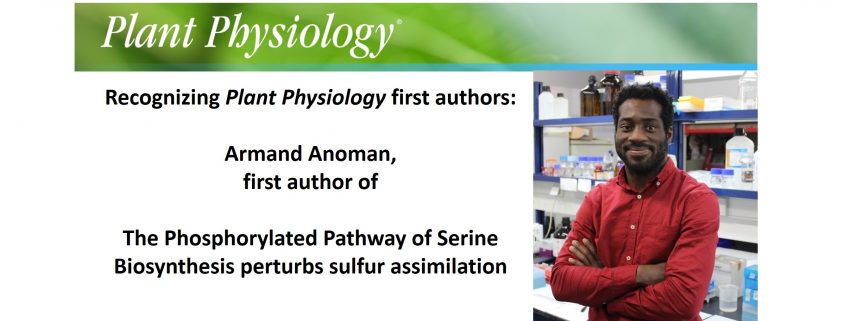Recognizing Plant Physiology first author: Armand Anoman
Armand D. Anoman, first author of The Phosphorylated Pathway of Serine Biosynthesis perturbs sulfur assimilation
Current Position: Postdoctoral researcher at ERI BIOTECMED, University of Valencia, Spain
Education: PhD in biotechnology, plant biology department, University of Valencia, Spain
Non-scientific Interests: basketball, sports in general, reading
Brief bio: I obtained my PhD in 2015 in the lab of Dr Roc Ros at the University of Valencia in Spain. During my doctoral thesis, I contributed to go further in understanding the functional characterisation of the plastidial glycolytic enzyme glyceraldehyde-3-phosphate dehydrogenase(GAPCp) in Arabidopsis thaliana. We were able to show that GAPCp plays a crucial role in non-photosynthetic cells of both photosynthetic and non-photosynthetic organs. This enzyme contributes to the production of 3-phosphoglycerate, the precursor of the phosphorylated pathway of serine biosynthesis (PPSB) in plastids. I then proceeded to work on this area of research, which is my current postdoc endeavour in the Roc’s lab. In the paper that we are publishing in this Plant Physiology issue, we have been able to demonstrate that PPSB is at the crossroads between carbon, nitrogen, and sulfur metabolism in C3 plants. This discovery allows us to consider PPSB as a target for crop improvement strategies. In plants, serine biosynthesis occurs mainly through the PPSB and through the glycolate pathway, associated with photorespiration. Studying the interactions between both pathways, especially in the context of climate change, is also one of my objectives. I am performing those studies in two model species, Arabidopsis and maize.




